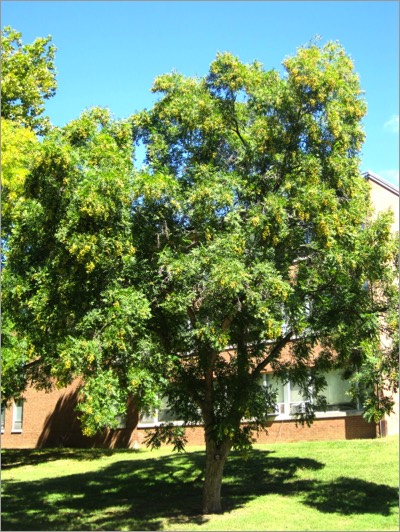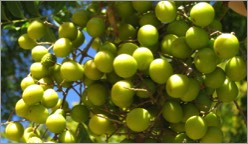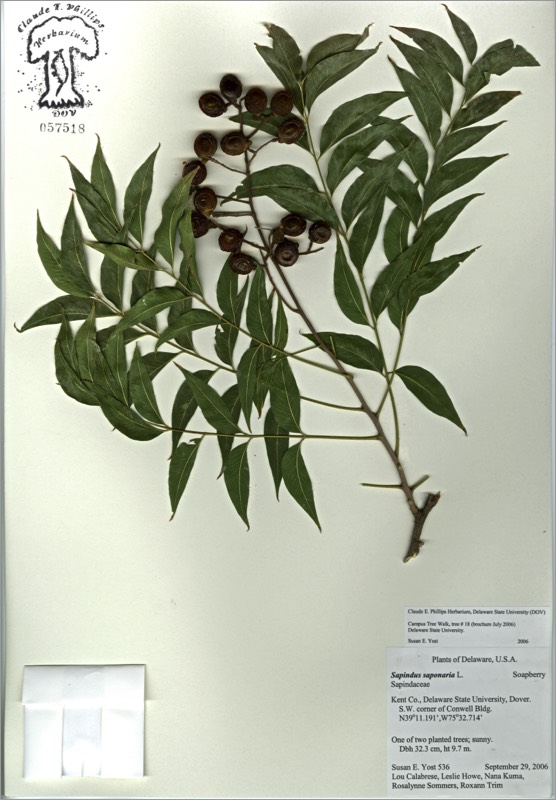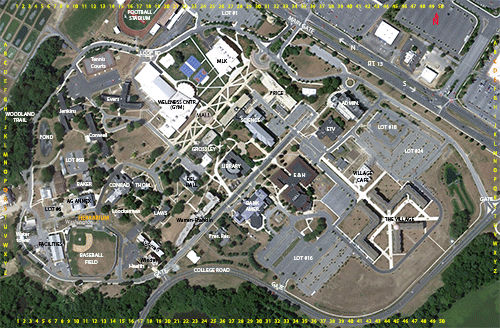*Sapindus saponaria


*Sapindus saponaria
SOAPBERRY
Sapindaceae
South America, S. North America
Location: map coordinates M-13 (near southwest corner of Conwell Hall), N 39°11'11'' W 75°32'42''
Planting history: presently unknown.
Description:
*Non-native species (not native to Delaware)
SOAPBERRY
Sapindaceae
South America, S. North America
Location: map coordinates M-13 (near southwest corner of Conwell Hall), N 39°11'11'' W 75°32'42''
Planting history: presently unknown.
Description:
- deciduous tree
- etymology: Sapindus from Latin for Indian soap (saponis = soap, and Indicus = Indian); saponaria = soapy
- leaf pinnately compound, 7-19 leaflets
- flowers small, whitish, in large clusters (panicles)
- fruits fleshy, golden; in large clusters; becoming dark; produce a soapy lather (hence the common and scientific names), formerly used for washing by Native American Indians; fruits poisonous if eaten by humans
- seeds shiny black; used to make beads, buttons
- tolerant of dry, poor soils
*Non-native species (not native to Delaware)


HIT REFRESH TO START LOCATION GRAPHIC